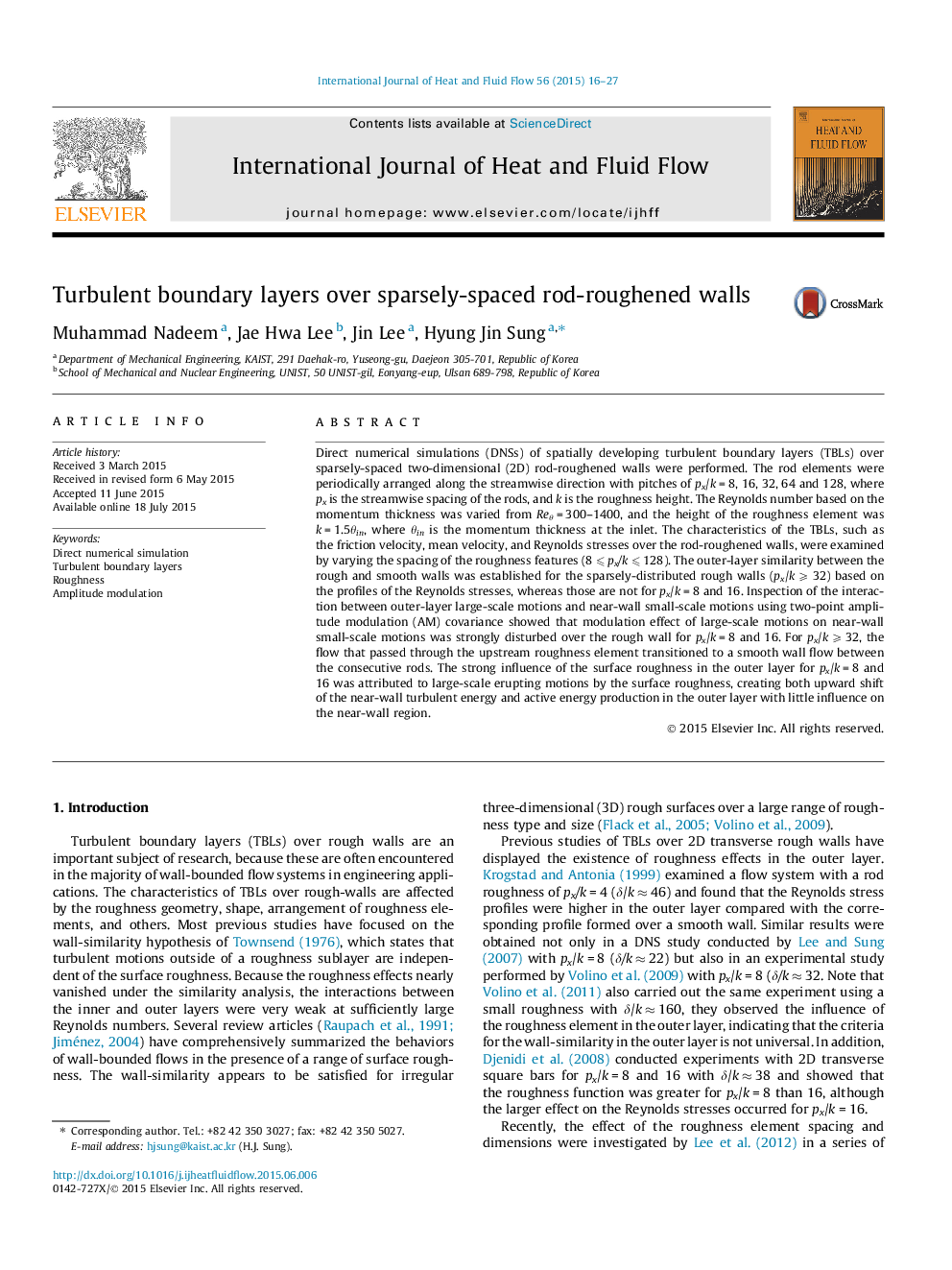| Article ID | Journal | Published Year | Pages | File Type |
|---|---|---|---|---|
| 654980 | International Journal of Heat and Fluid Flow | 2015 | 12 Pages |
•DNSs of spatially developing TBLs over sparsely-spaced 2D rough walls were performed.•The characteristics of the TBLs were examined for rough walls having px/k = 8–128.•The modulation effect was strongly disturbed over the rough wall for px/k = 8 and 16.•Strong influence in the outer layer is due to large-scale eruptions from roughness.
Direct numerical simulations (DNSs) of spatially developing turbulent boundary layers (TBLs) over sparsely-spaced two-dimensional (2D) rod-roughened walls were performed. The rod elements were periodically arranged along the streamwise direction with pitches of px/k = 8, 16, 32, 64 and 128, where px is the streamwise spacing of the rods, and k is the roughness height. The Reynolds number based on the momentum thickness was varied from Reθ = 300–1400, and the height of the roughness element was k = 1.5θin, where θin is the momentum thickness at the inlet. The characteristics of the TBLs, such as the friction velocity, mean velocity, and Reynolds stresses over the rod-roughened walls, were examined by varying the spacing of the roughness features (8 ⩽ px/k ⩽ 128). The outer-layer similarity between the rough and smooth walls was established for the sparsely-distributed rough walls (px/k ⩾ 32) based on the profiles of the Reynolds stresses, whereas those are not for px/k = 8 and 16. Inspection of the interaction between outer-layer large-scale motions and near-wall small-scale motions using two-point amplitude modulation (AM) covariance showed that modulation effect of large-scale motions on near-wall small-scale motions was strongly disturbed over the rough wall for px/k = 8 and 16. For px/k ⩾ 32, the flow that passed through the upstream roughness element transitioned to a smooth wall flow between the consecutive rods. The strong influence of the surface roughness in the outer layer for px/k = 8 and 16 was attributed to large-scale erupting motions by the surface roughness, creating both upward shift of the near-wall turbulent energy and active energy production in the outer layer with little influence on the near-wall region.
